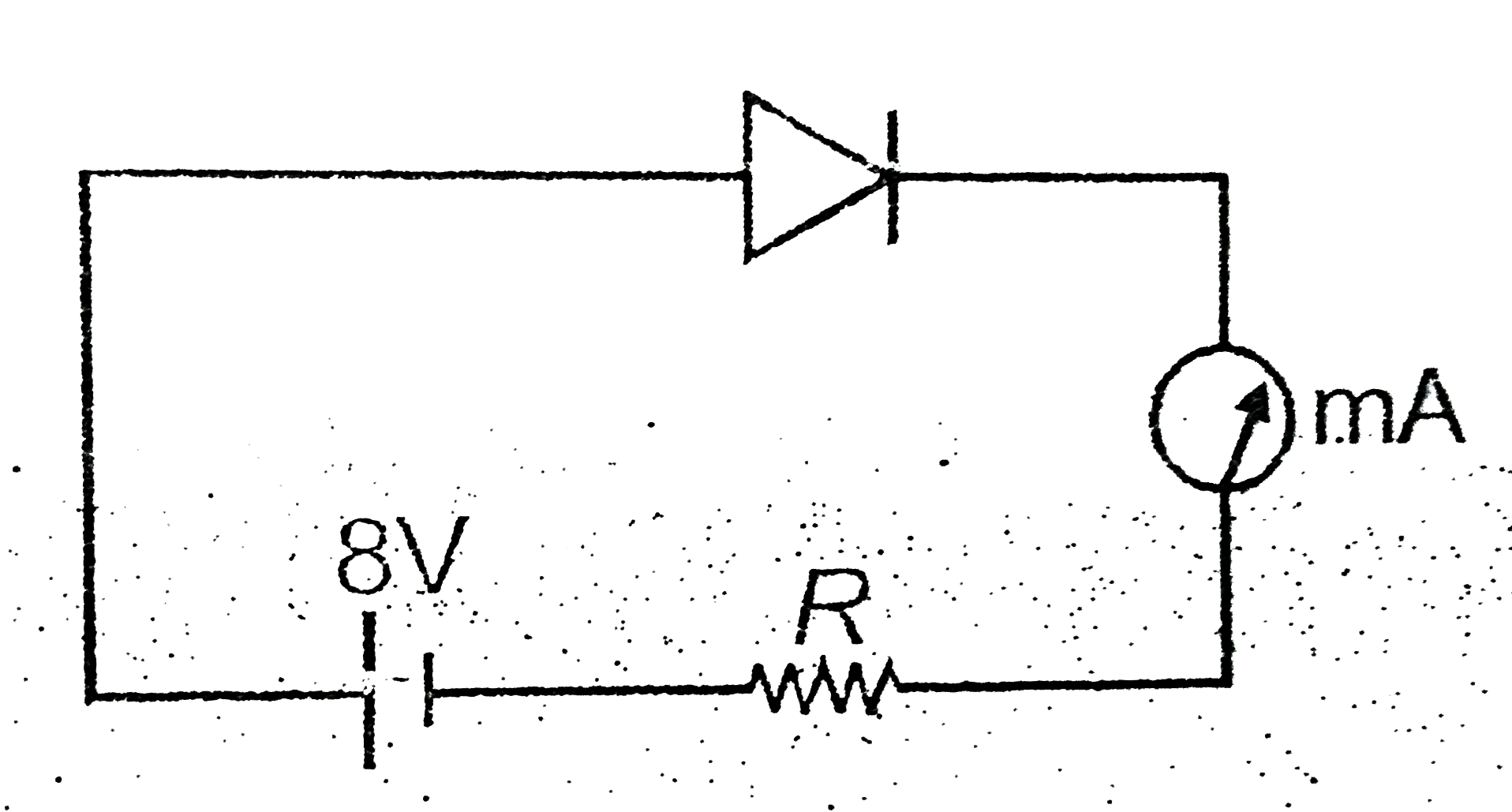When LED is forward biased, then
electrons from the n - type side cross the p - n junction and recombine with holes in the p - type side
electrons and holes neutralise each other in depletion region
at junction electrons and holes remain at rest
none of these
The correct Answer is:A
To solve the question "When LED is forward biased, then," we need to analyze the behavior of an LED (Light Emitting Diode) when it is connected in a forward-biased configuration. Let's break down the steps:
1. Understanding LED Structure:
- An LED is a type of diode formed by a p-n junction. The p-type semiconductor has holes as the majority carriers, while the n-type semiconductor has electrons as the majority carriers.
2. Forward Biasing:
- In a forward-biased condition, the p-type side is connected to the positive terminal of a power supply, and the n-type side is connected to the negative terminal. This configuration reduces the barrier potential at the junction.
3. Movement of Charge Carriers:
- When the LED is forward biased, holes from the p-type region move towards the n-type region, and electrons from the n-type region move towards the p-type region.
4. Recombination of Charge Carriers:
- As electrons from the n-type region cross the junction, they recombine with holes in the p-type region. This recombination process is crucial because it leads to the emission of energy.
5. Energy Emission:
- In the case of an LED, when electrons recombine with holes, the energy released is in the form of light rather than heat. This is what makes LEDs different from regular diodes.
6. Evaluating the Options:
- Option A states that "electrons from n-type side cross the p-n junction and recombine with the holes in the p-type side." This statement is true and accurately describes the process that occurs when an LED is forward biased.
- Option B is incorrect because electrons and holes do not neutralize each other in the depletion region; instead, they recombine across the junction.
- Option C is also incorrect because electrons and holes do not remain at rest; they are actively moving and recombining.
- Option D is not applicable since option A is correct.
Conclusion:
The correct answer is Option A: "electrons from n-type side cross the p-n junction and recombine with the holes in the p-type side."
---
- An LED is a type of diode formed by a p-n junction. The p-type semiconductor has holes as the majority carriers, while the n-type semiconductor has electrons as the majority carriers.
- In a forward-biased condition, the p-type side is connected to the positive terminal of a power supply, and the n-type side is connected to the negative terminal. This configuration reduces the barrier potential at the junction.
- When the LED is forward biased, holes from the p-type region move towards the n-type region, and electrons from the n-type region move towards the p-type region.
- As electrons from the n-type region cross the junction, they recombine with holes in the p-type region. This recombination process is crucial because it leads to the emission of energy.
- In the case of an LED, when electrons recombine with holes, the energy released is in the form of light rather than heat. This is what makes LEDs different from regular diodes.
- Option A states that "electrons from n-type side cross the p-n junction and recombine with the holes in the p-type side." This statement is true and accurately describes the process that occurs when an LED is forward biased.
- Option B is incorrect because electrons and holes do not neutralize each other in the depletion region; instead, they recombine across the junction.
- Option C is also incorrect because electrons and holes do not remain at rest; they are actively moving and recombining.
- Option D is not applicable since option A is correct.
The correct answer is Option A: "electrons from n-type side cross the p-n junction and recombine with the holes in the p-type side."
Similar Questions
Knowledge Check
A forward biased diode is
A B
B C
C D
D
When a p-n junction is reverse-biased,the current becomes almost constant at 25µA. current of when it is forward biased at 200 mV . a current of 75µA is obtained.Find the magnitude of diffusion current when the diode is (a)unbiased ,(b)reverse-biased at 200 mVand (c )forward-biased at 200mV.
View SolutionWhen a diode is forward biased, it has a voltage drop of 0.5 V. The safe limit of current through the diode is 10 mA. If a battery of emf 1.5 V is used in the circuit, the value of minimum resistance to be connected in series with the diode so that the current does not exceed the safe limit is :
View SolutionAssertion : Light emitting diode (LED) emits spontaneous radiation.
Reason : LED are forward biased p-n junctions.
View SolutionWhat happens to the width of depletion layer of a p-n junction when it is (i) forward biased, (ii) reverse biased?
View SolutionA transistor is used in common emitter mode as an amplifier. Then
(1) the base-emitter junction is forward biased
(2) the base emitter junction is reverse biased
(3) the input signal is connected in series with the voltage applied to the base-emitter junction.
(4) the input signal is connected in series with the voltage applied to the base collector junction.
View SolutionIn the given circuit a silicon diode with knee voltage 0.7V is forward biased with a battery of e.m.f 8V. The current in the circuit is 40 mA. Find the power drop at resistor R and diode.

View Solutionp-n junction is called as forward biased when
View Solution
